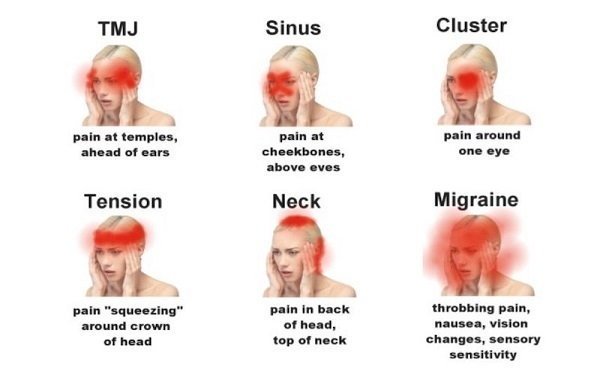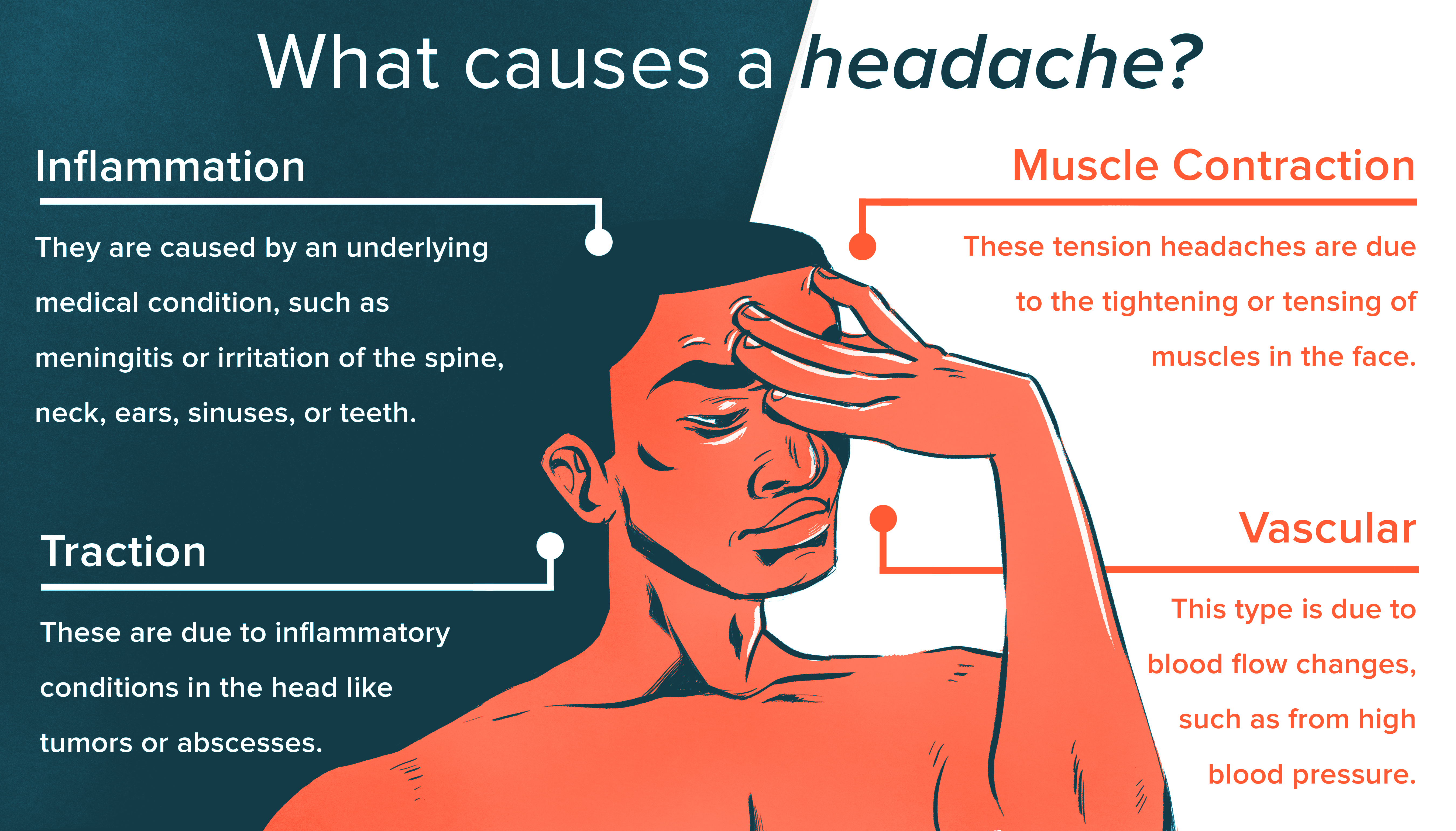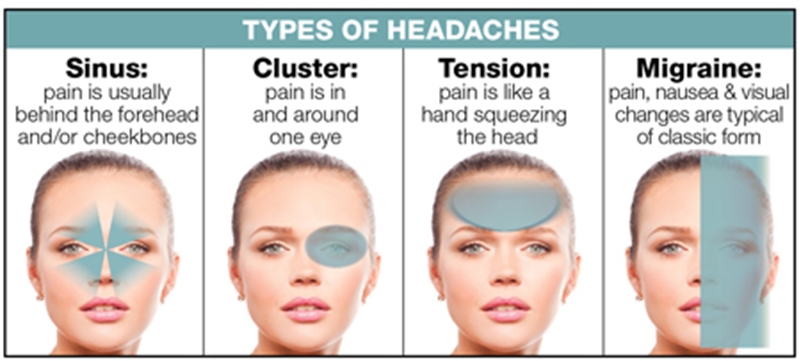Topic how to make a migraine headache go away: Discover effective strategies to alleviate migraine headaches, blending the latest medical insights with practical tips for quick and lasting relief.
Table of Content
- How do I make a migraine headache go away?
- Understanding Migraines and Their Symptoms
- Immediate Relief Methods for Migraine Attacks
- Lifestyle Adjustments for Migraine Prevention
- Over-the-Counter Medications and Their Effectiveness
- Prescription Medications: Triptans, Gepants, and More
- YOUTUBE: Headache Migraine How To Get Rid Of Headaches
- Alternative Treatments: Neurostimulation Devices
- Dietary Considerations and Trigger Management
- Professional Support and Counseling
- Emerging Treatments and Future Research Directions
How do I make a migraine headache go away?
To make a migraine headache go away, you can try the following steps:
- Find a calm environment.
- Turn off the lights. Light and sound can make migraine pain worse.
- Relax in a dark, quiet room.
- Try temperature therapy.
- Apply hot or cold packs to your head or neck.
- Place a cold pack on your forehead.
- Use ice cubes wrapped in a towel or a bag of frozen vegetables.
- You can also try a cold shower.
Remember to consult a healthcare professional for proper diagnosis and treatment of migraines.
READ MORE:
Understanding Migraines and Their Symptoms
Migraines are complex neurological conditions characterized by intense, debilitating headaches. Typically, the pain is a severe throbbing or pulsing sensation, often localized to one side of the head. However, it can also affect both sides.
Symptoms vary and may include nausea, vomiting, and extreme sensitivity to light and sound. Migraine episodes can significantly disrupt daily life, lasting from hours to several days.
Stages of a Migraine
- Prodrome: This preliminary phase may occur one or two days before the migraine. Signs include mood changes, food cravings, neck stiffness, increased urination, and frequent yawning.
- Aura: Not everyone experiences this stage, but it can include visual disturbances (like flashes of light or vision loss), tingling sensations, and difficulty speaking. These symptoms typically develop gradually and can last for up to 60 minutes.
- Attack: This is the phase where the actual migraine headache occurs. Pain is often on one side of the head, throbbing or pulsating in nature. Sensitivity to light, sound, and sometimes smell and touch, along with nausea and vomiting, are common.
- Post-drome: Following the attack, individuals often feel drained or washed out. Some might feel unusually elated. Sudden head movements might briefly trigger pain again.
It"s important to understand that migraines can affect children and teenagers as well as adults, and the severity and frequency of episodes vary from person to person. While some may experience migraines infrequently, others may suffer from them several times a month.
Recognizing these signs and symptoms is crucial for effective management and treatment of migraines. Keeping a record of migraine episodes and discussing them with healthcare providers can significantly aid in diagnosing and formulating a treatment plan tailored to individual needs.
:max_bytes(150000):strip_icc()/VWH_Illustration_Getting-Rid-of-a-Migraine_Illustrator_Ellen-Lindner_Final-a245985cbf4645a7874d573991fb6cbb.jpg)
Immediate Relief Methods for Migraine Attacks
When a migraine attack occurs, immediate relief is a priority. There are several effective methods to alleviate symptoms quickly:
- Rest in a Dark, Quiet Room: Light and sound can worsen migraine pain. Resting in a dark and quiet environment can help reduce this pain.
- Apply a Warm or Cold Compress: Using a cold compress can have a numbing effect, providing relief. Alternatively, a warm compress can relax tense muscles.
- Stay Hydrated: Dehydration can trigger migraines. Drinking water, especially at the onset of symptoms, can be helpful.
- Gentle Massage: Massage can help relax the muscles and reduce stress, which might ease migraine pain.
- Mindfulness and Meditation: Stress is a common trigger for migraines. Mindfulness and meditation can help manage stress levels.
- Aromatherapy with Lavender: The scent of lavender has a calming effect and can help in stress relief.
- Regular Exercise: While exercise during an attack can worsen pain, regular physical activity between attacks can reduce their frequency.
These methods can be effective for immediate relief. However, it is important to consult a healthcare professional for personalized advice and treatment options.
Lifestyle Adjustments for Migraine Prevention
Migraine prevention often involves making certain lifestyle adjustments. Here are some strategies that can help:
- Sleep Well: Maintaining a regular sleep schedule is crucial. Avoid screens and other distractions before bedtime to improve sleep quality.
- Consistent Eating Habits: Eat at regular times each day and avoid skipping meals. Fasting can increase the risk of migraines.
- Food Diary: Keep a journal to track your food intake and identify potential migraine triggers, like aged cheese, chocolate, caffeine, and alcohol.
- Regular Exercise: Engage in physical activities like walking, swimming, or cycling. Start slowly and increase gradually to avoid triggering migraines.
- Stress Management: Find ways to manage daily stress. This can include simplifying your life, managing time wisely, taking breaks, staying positive, enjoying hobbies, and practicing relaxation techniques like deep breathing.
- Migraine Diary: Keep a record of your migraine episodes to identify triggers and effective treatments. This can be valuable information for your healthcare provider.
- Gradual Exposure to Triggers: Instead of completely avoiding triggers, gradually expose yourself to them while using behavioral management techniques to cope.
- Seek Support: Consider joining support groups or seeking counseling if you"re feeling anxious or depressed.
These lifestyle adjustments, combined with the right medical treatment, can significantly help in managing migraines. Always consult with your healthcare provider for personalized advice.

Over-the-Counter Medications and Their Effectiveness
Over-the-counter (OTC) medications can be effective for managing migraine symptoms for some people. However, it"s important to use them correctly to prevent overuse, which can lead to medication-overuse headaches. Here are some commonly used OTC medications for migraines:
- Nonsteroidal Anti-Inflammatory Drugs (NSAIDs): These include ibuprofen and aspirin. They can relieve migraine pain and are most effective when taken at the first sign of an oncoming migraine.
- Acetaminophen: Often used for mild migraine pain, but it should be used cautiously as overuse can lead to other health issues.
- Combination Medications: Some OTC medications combine caffeine, aspirin, and acetaminophen (like Excedrin Migraine), which can be helpful against mild migraine pain.
Always consult with a healthcare professional before starting any medication regimen for migraines, particularly if you have other medical conditions or are taking other medications. They can provide guidance on the most appropriate and effective treatment options for your specific situation.
Prescription Medications: Triptans, Gepants, and More
For migraine relief, a variety of prescription medications are available. These medications are typically used in conjunction with lifestyle changes to effectively manage migraine symptoms. The most commonly prescribed classes of medications include:
- Triptans: These are often the first line of treatment for migraines. They work by targeting serotonin receptors to reduce inflammation and constrict blood vessels. Examples include sumatriptan and rizatriptan.
- Gepants: This newer class of drugs works by blocking CGRP, a molecule involved in migraine attacks. They are used for both treatment and prevention of migraines. Examples include ubrogepant and rimegepant.
- Lasmiditan: Used for acute migraine treatment, lasmiditan functions differently from triptans and may be an alternative for those who can"t take triptans.
- Dihydroergotamine (DHE): Available as a nasal spray or injection, DHE is effective for longer-lasting migraine attacks. It is most effective when used soon after the onset of symptoms.
- Ergotamine Combinations: These combine ergotamine and caffeine and can be effective for some individuals, particularly in tablet or suppository form.
- Neurostimulation Devices: These devices deliver electric or magnetic pulses to nerves involved in pain processing and can be used for acute treatment of migraines.
- Anti-nausea Medications: Often used alongside other migraine treatments to alleviate nausea and vomiting symptoms associated with migraines.
It"s important to consult with a healthcare professional to determine the most appropriate medication based on the frequency and severity of your headaches, and any other individual health considerations. Remember, the effectiveness of these medications can vary from person to person.
:max_bytes(150000):strip_icc()/migraine-relief-pressure-points-5205811-FINAL-cdc9e0d051cb460bac8baa98bc01954f.jpg)
Headache Migraine How To Get Rid Of Headaches
Are you tired of annoying headaches ruining your day? Don\'t worry, we\'ve got you covered! Watch this informative video packed with effective remedies and holistic approaches to help you bid farewell to those pesky headaches once and for all!
5 Tips to Relieve Migraine Headaches Recommended by Doctors MFine
Looking for some expert tips to make your life easier? Look no further! This video is a treasure trove of practical and valuable tips that will revolutionize the way you do things. From simple household hacks to time-saving tricks, you won\'t want to miss out on these game-changing tips!
Alternative Treatments: Neurostimulation Devices
Neurostimulation devices are emerging as an alternative treatment for migraine headaches. These devices use electric or magnetic pulses to stimulate nerves involved in pain processing, providing relief from migraine symptoms. Here are some key aspects of neurostimulation devices:
- Type of Devices: Several devices targeting different nerves are available. Each device works by delivering electric or magnetic pulses to specific nerves.
- Mode of Action: Neurostimulation can interrupt the pain signals sent to the brain, potentially reducing the intensity or frequency of migraine attacks.
- Usage: These devices are typically used for acute treatment of migraines and are most effective when used as early as possible at the onset of symptoms.
- Non-Drug Treatment: Neurostimulation offers a non-drug approach to managing migraine pain, which can be particularly beneficial for those who prefer to avoid medication or have contraindications.
- Examples: GammaCore Sapphire is an example of a neurostimulation device. It is held against the neck to stimulate the vagus nerve during a migraine attack.
- Effectiveness: While the effectiveness can vary, many users find these devices helpful in managing their migraine symptoms.
It is important to consult with a healthcare professional before starting any new treatment, including neurostimulation devices, to ensure it is appropriate for your specific condition and health status.
Dietary Considerations and Trigger Management
Managing migraines often involves understanding and addressing dietary triggers. Here are some strategies that can help in identifying and managing these triggers:
- Identify Common Triggers: Foods such as aged cheese, chocolate, caffeine, and alcohol are known to trigger migraines in some people. It"s important to recognize which foods might be causing your migraines.
- Maintain Consistent Eating Habits: Eating at regular times and not skipping meals can help in managing migraines. Fasting or irregular eating patterns can increase the risk of migraines.
- Food Diary: Keeping a food diary can be a useful tool. Track what you eat and note any migraine occurrences. This can help identify specific triggers unique to your condition.
- Hydration: Dehydration is a common trigger for migraines. Ensure you are drinking enough water throughout the day.
- Gradual Exposure: Recent research suggests that gradual exposure to potential triggers, combined with behavioral management techniques, might be more effective than completely avoiding them. This approach requires careful monitoring and should be discussed with a healthcare professional.
- Professional Guidance: Consulting with a healthcare provider can provide personalized advice and help in creating a plan to manage your dietary triggers effectively.
Remember, managing migraines is a personal journey, and what works for one person may not work for another. It"s important to find a balance and a plan that suits your individual needs.
:max_bytes(150000):strip_icc()/nausea-from-migraine-1719624-3f48acee8c7e45ba92860a84a1f2b4da.png)
Professional Support and Counseling
Professional support and counseling play a crucial role in the management of migraines. Working with healthcare professionals can help you understand and manage your condition effectively. Here"s how you can benefit from professional support:
- Seeking Medical Advice: If you experience migraines, it"s important to consult a healthcare professional, potentially a neurologist, for a proper diagnosis and treatment plan.
- Understanding Migraines: Education about migraines is key. Learn about the condition, its triggers, and treatment options. This knowledge can empower you to manage your migraines more effectively.
- Personalized Treatment Plans: Migraine treatments vary widely and can include both acute (for immediate relief) and preventive medications. A medical professional can provide a treatment plan tailored to your specific needs.
- Migraine Diaries: Keeping a diary of your migraine episodes can help identify triggers and patterns. This information is valuable for both you and your healthcare provider in managing your migraines.
- Lifestyle Adjustments: Healthcare professionals can guide you in making lifestyle changes, such as regular exercise, stress management, and sleep hygiene, which can help reduce the frequency and severity of migraines.
- Support Groups and Counseling: Joining support groups or seeking counseling can help in dealing with the emotional and psychological aspects of living with migraines. Sharing experiences with others can provide comfort and practical advice.
Remember, effective migraine management is a collaborative effort between you and your healthcare team. Don"t hesitate to share your concerns and ask questions to get the support you need.
READ MORE:
Emerging Treatments and Future Research Directions
The field of migraine treatment is continually evolving, with new therapies and research directions emerging. Here are some of the latest advancements and areas of focus:
- New Medications: Recent developments in migraine medications include CGRP receptor antagonists, such as rimegepant (Nurtec ODT) and ubrogepant (Ubrelvy). These oral tablets provide relief from migraine pain and are especially useful for those who cannot take triptans or do not find relief from them.
- Lasmiditan: Another new medication, Lasmiditan (Reyvow), available as an oral tablet, can alleviate migraine pain within an hour and is an alternative for those who cannot use triptans.
- Dihydroergotamine (DHE): For severe migraine attacks, intravenous DHE is used in emergency settings. It is also available as a nasal spray (Migranal, Trudhesa) and an injection, offering an effective option for home use.
- Neurostimulation Devices: Non-drug treatments like neurostimulation devices are gaining attention. These devices send electric or magnetic pulses to nerves involved in pain processing and can be used for acute migraine treatment.
- Anti-nausea Drugs: For migraines accompanied by nausea, specific anti-nausea drugs can be prescribed alongside other migraine therapies for more comprehensive symptom management.
Future research is likely to continue exploring new drug classes, non-drug treatments, and individualized approaches to migraine management. Always consult with a healthcare professional for the most current treatment options.
Discover the latest strategies and treatments to alleviate migraine headaches. From lifestyle adjustments to cutting-edge medications, this comprehensive guide offers hope and solutions for those seeking relief from migraine pain.








:max_bytes(150000):strip_icc()/VWH_Illustration_Natural-Remedies-for-Managing-Headaches_Paige-McLaughlin_Final-461a780622884c479edf3dc01234692c.jpg)

